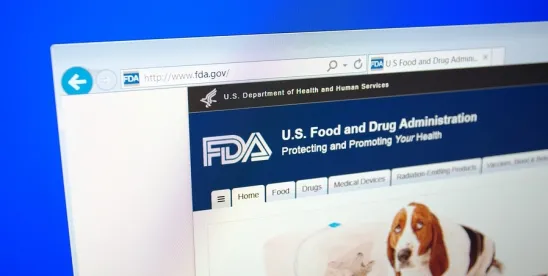The U.S. Food and Drug Administration (“FDA”) in March 2020 temporarily halted its domestic inspection program amid the coronavirus disease (COVID-19) pandemic. During this time, FDA continued to use other tools, including remote assessment and import alerts, as part of the agency’s risk-based approach of ensuring quality. On July 10th, FDA announced that it is preparing to resume on-site inspections of FDA-regulated entities, and that “resuming prioritized domestic inspections will depend on the data about the virus’ trajectory in a given state and locality and the rules and guidelines that are put in place by state and local governments.” FDA will be using both the White House Guidelines for Opening Up America Again and Centers for Disease Control and Prevention (“CDC”) guidance for non-health care entities as a roadmap to conducting inspections.
FDA stated that there are three main phases of regulatory activity: (1) mission critical inspections only, (2) all inspections with caveats to help protect staff who have self-identified as being in a vulnerable population, and (3) resumption of all regulatory activities.
What do FDA-regulated entities need to know?
-
Notification. For the foreseeable future, in order to ensure the safety of the investigator and entity’s employees, FDA will pre-announce on-site inspections to the FDA-regulated entities. This pre-notification does not apply to retail tobacco inspections which are traditionally undercover operations.
-
Prioritization. FDA will prioritize domestic inspection based the “COVID-19 Advisory Level,” which uses real-time data to qualitatively assess the number of COVID-19 cases in a local area based on state and national data. FDA will make the Advisory Level data available to its state partners, who carry out inspections of FDA-regulated entities on the agency’s behalf. FDA stated that in order to move to the next phase, FDA must see not only downward trends in new cases of COVID-19 and hospitalizations in the given area but also access to other services that have been curtailed by the pandemic, such as public transportation.
-
Safety. During the inspection, all investigators will be outfitted with personal protective equipment. Additionally, investigators will be equipped with any other necessary equipment to carry out their work while adhering to CDC, state, and local guidance.
USDA’s Food Safety and Inspection Service (FSIS) has continued conducting routine inspection of FSIS-regulated facilities throughout the pandemic, incorporating appropriate safety measures.
USDA Extends Enforcement Discretion for Retail Labels
Over the past few months, USDA’s Food Safety and Inspection Service (FSIS) has been exercising enforcement discretion to provide labeling flexibilities for products intended for food service going to retail. On July 10, 2020, FSIS announced that it would be extending its enforcement discretion for certain labeling for an additional period of 60 days, through September 26, 2020. Below we highlight the key labeling flexibilities that are being extended.
Labeling at a Federal Establishment. FSIS states that products produced at an FSIS-inspected federal establishment – typically intended for distribution to hotels, restaurants, or similar institutions (HRI) – are allowed to have modified labels so that the products can be sold at retail. FSIS requires the label to bear all required features except that FSIS will notobject to the use of labels without nutrition labeling, even if the establishment does not meet an existing exemption under 9 CFR 317.400 or 381.500. This modified label may only be used if the labels do not bear any nutrition claims.
If the proposed food label is deficient in any other way from an FSIS labeling compliance standpoint (e.g., formulation changes not reflected in the ingredients statement), then establishments will need to submit the label to FSIS for temporary approval on a case by case basis.
Labeling at Retail for Bulk Product Already in Commerce. FSIS is allowing bulk product, labeled for HRI, to be distributed to retail channels. By way of example, FSIS states that a box labeled “for school foodservice use only” can now be distributed to a retail outlet for repackaging and labeling. Through September 26, 2020, FSIS will not object to products being distributed in a manner that is inconsistent with the statement of limited use under 9 CFR 317.8 and 381.129. FSIS also notes that the label applied to the repackaged product will be required to bear all mandated labeling features except for the USDA mark of inspection.
Labeling at Retail for Product in Unlabeled Protective Coverings Already in Commerce.Through September 26, 2020, FSIS will be permitting fully labeled containers with meat or poultry products in unlabeled protective coverings to be distributed to retailers for labeling. This represents a shift from the requirements set forth at 9 CFR 317.1 and 381.115.
FSIS notes that the container may have a statement of limited use that would normally indicate that the product is for HRI only. FSIS will not be objecting to the container being distributed to retail and the retailer then applying a label to the protective covering so that the product may be sold at retail on a temporary basis.
FSIS explains that the label applied by the retailer may be an insert label supplied by the federal establishment that produced the product or a label that the retailer printed. FSIS expects the labels applied by the retailer to bear all required features minus the USDA mark of inspection, and specifically notes that labels printed at retail cannot bear the USDA mark of inspection. FSIS will also not require nutrition labeling for these products even in cases where an exemption from nutrition labeling does not apply.





 />i
/>i

